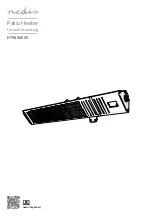
24
TROUBLESHOOTING GUIDE
CONDITION
CAUSE
REMEDY
Leaking water.
Poorly sealed, hot or cold water
connections, gas control valve threads,
relief valve, or drain valve.
Tighten threaded connections.
Leakage from plumbing system or
other appliances.
Inspect plumbing system and other appliances.
Condensation.
Refer to Condensation.
Water drips from the relief
valve.
Heater stacking.
Lower gas control valve setting.
Excessive water pressure.
Install a pressure-reducing valve.
Thermal expansion in a closed water
system.
Install an expansion tank.
Improperly seated valve.
Check relief valve works properly and
replace, if necessary.
The gas control valve fails
to shut off.
Defective gas control valve.
Replace with new gas control valve.
Improper calibration.
Replace gas control valve.
Condensation.
Water heater filled for first time.
Let water heater warm up. Problem should go away.
If it persists, check all plumbing connections for leaks.
Heavy draws of hot water with
very cold refill water.
Let water heater warm up. Problem should go away.
If it persists, check all plumbing connections for leaks.
Water heater is undersized.
Install size of water heater that meets demand.
Combustion odours.
Insufficient secondary air.
Provide fresh air ventilation.
Heater installed in a confined area.
Provide fresh air ventilation.
Flue clogged.
Clean. Check for source of trouble and correct.
Smoking and carbon
formation (sooting).
Insufficient secondary air.
Provide fresh air ventilation.
Low gas pressure.
Check with gas utility company.
Burner flame yellow, lazy.
Refer to The burner flame is yellow and lazy.
Flue clogged.
Clean. Check for source of trouble and correct.
Defective gas control valve.
Replace with new gas control valve.
Heater installed in a confined area.
Provide fresh air ventilation.
Smelly water.
High sulfate or mineral content in water.
Change magnesium anode to an aluminum anode
and bleach tank.





































